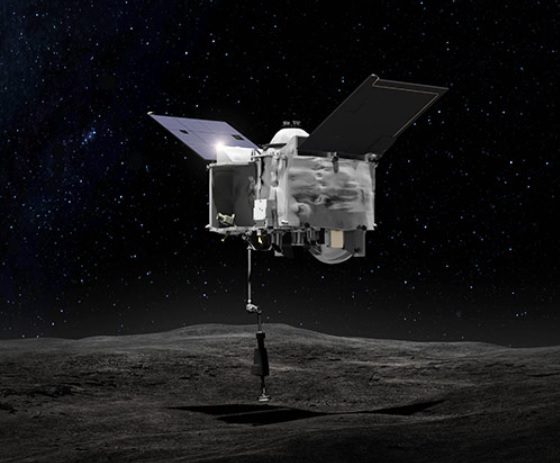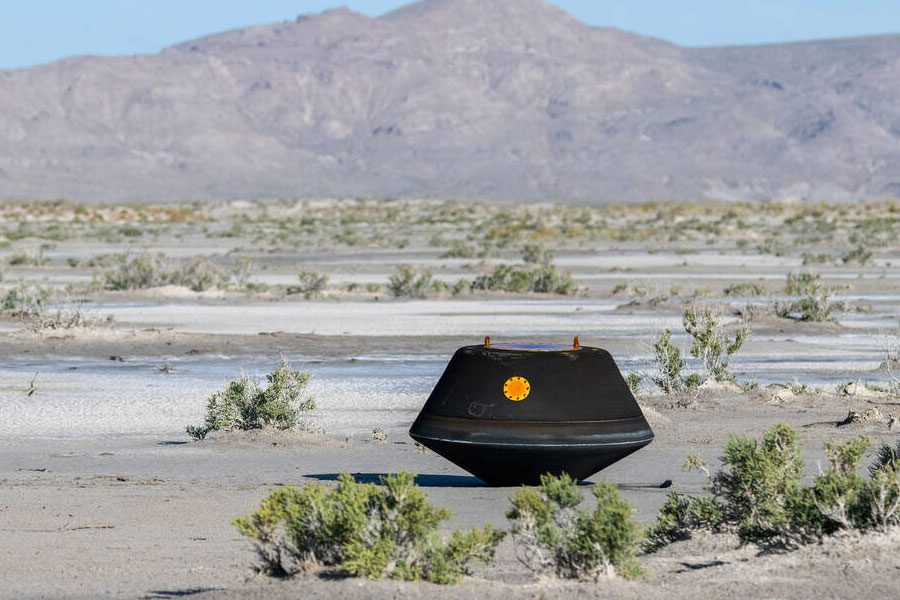The OSIRIS-REx mission to the asteroid Bennu has returned samples to Earth, fulfilling one of its main objectives seven years after it was launched in September 2016.
After a two-year outbound journey, it went into orbit around Bennu in December 2018. The following couple of years was dedicated to making observations. The spacecraft finally made a brief touch-and-go sample grab on 24 October 2020 before starting its return journey in May 2021.

Artist’s impression of OSIRIS-REx collecting its sample via a touch-and-go landing on Asteroid Bennu. Courtesy: NASA
As it closed on Earth, the OSIRIS-REx carrier spacecraft ejected its capsule at 1042 GMT on 24 September and made a divert burn to raise its orbital perigee to 774 km. The drop-off had left the return capsule with an atmospheric re-entry trajectory perigee of 22 km. On the same day the OSIRIS-REx sample return capsule (SRC) re-entered over California and landed, using a parachute as planned, in the US Department of Defense’s Test and Training Range in Utah at 1452 GMT (all times from Jonathan McDowell). The capsule was intact and was recovered.

OSIRIS-REx’s intact sample return capsule on desert floor of Utah. Courtesy: NASA/Keegan Barber
Despite NASA’s public relations claims, this is not the first asteroid sample return mission successfully achieved. Japan’s Hayabusa 2 achieved that status back in December 2020 when it landed in Woomera, Australia.
The small sample of asteroid dust in the OSIRIS-REx capsule will be examined by teams of scientists around the world. Some suspect that organic compounds may be present in the sample. Although the capsule has returned to Earth, the OSIRIS-REx carrier spacecraft’s life is not yet done. Renamed to OSIRIS-APEX, it will fly to Apophis, another asteroid, on a secondary mission. OSRIS-APEX will make a close fly-by of Earth in 2029 and then fly to Apophis to examine the effect of Earth on the asteroid’s orbit, spin rate and surface.
Update on 6 December 2023: While the OSIRIS-REx return capsule landed correctly its drogue parachute failed to deploy. The wirings connecting to the deployment mechanism was wrongly connected (signals meant to deploy the drogue chute fired out of order) & instead of releasing, the drogue parachute’s cord was cut inside the capsule at 100,000 feet and then later released at 10,000 feet with the main parachutes, rather than being released first at 100,000 feet and then cut at 10,000 feet.







